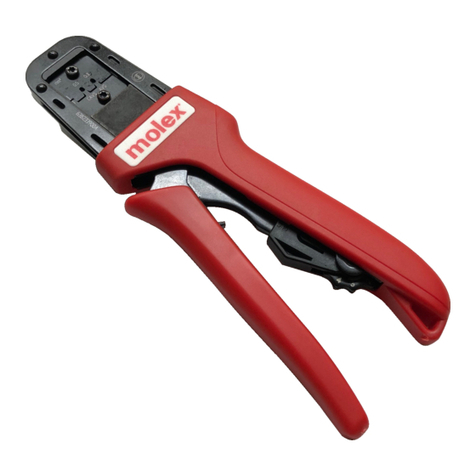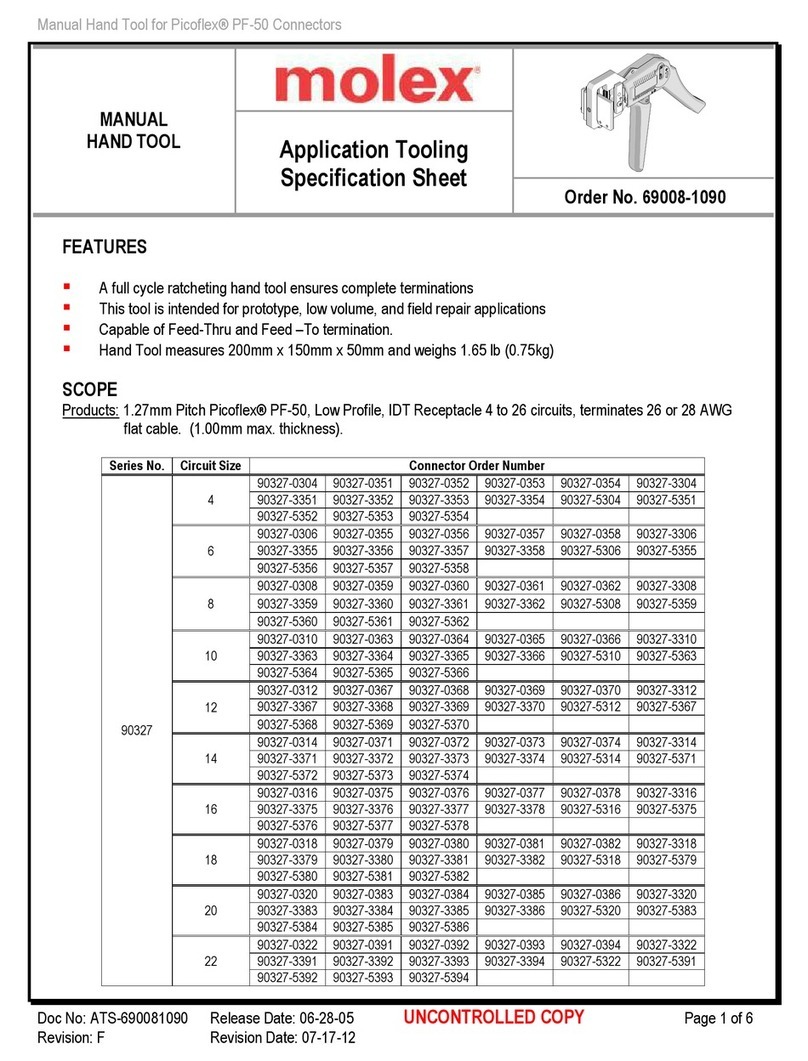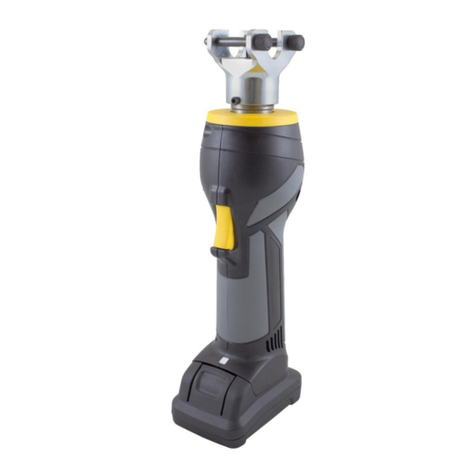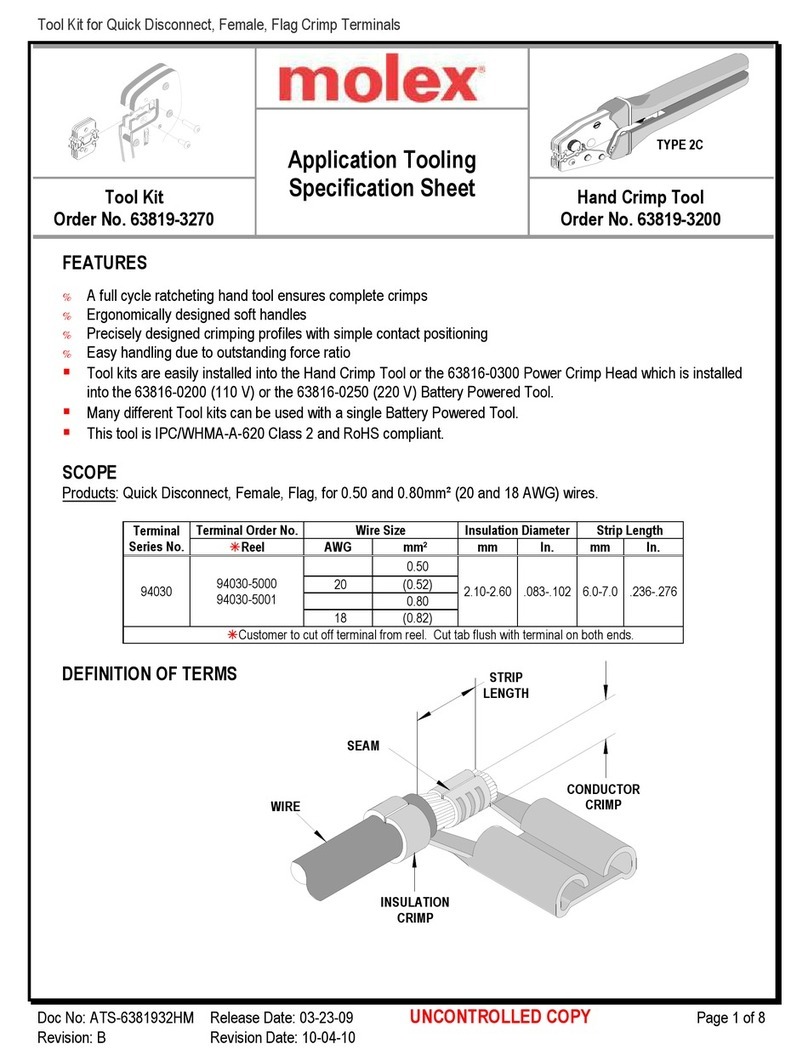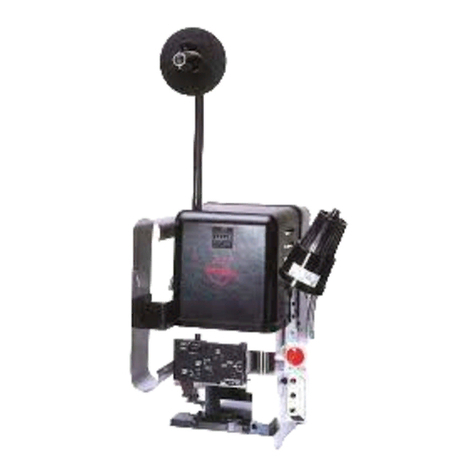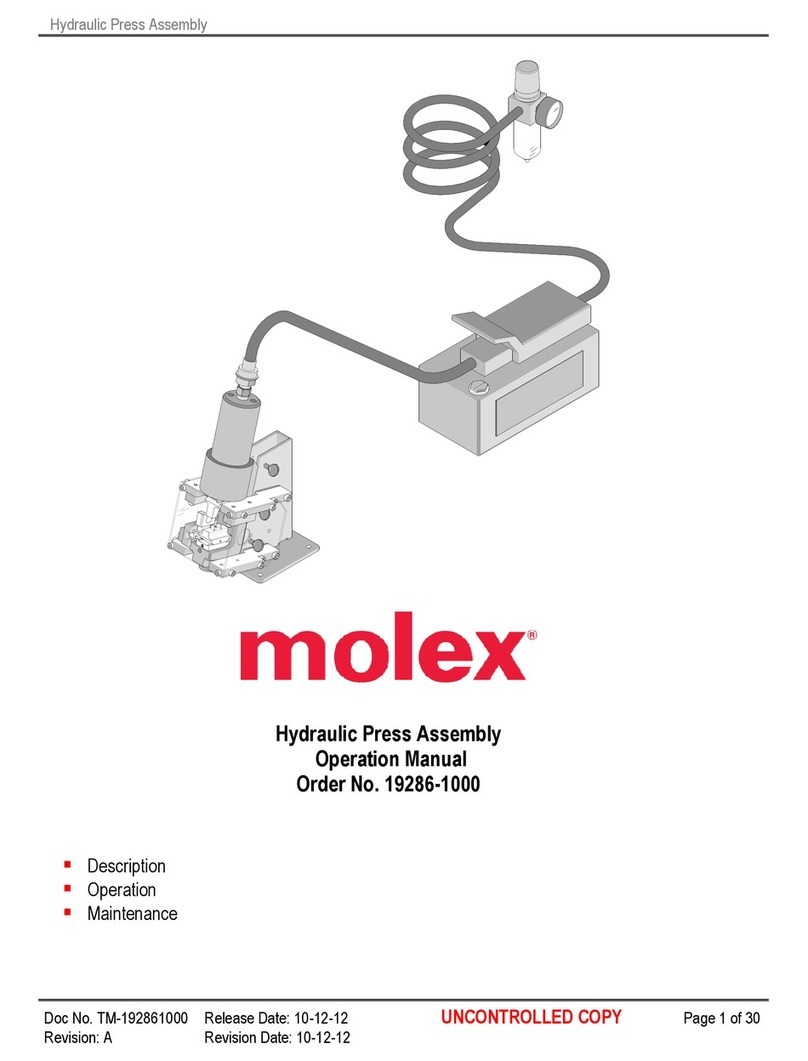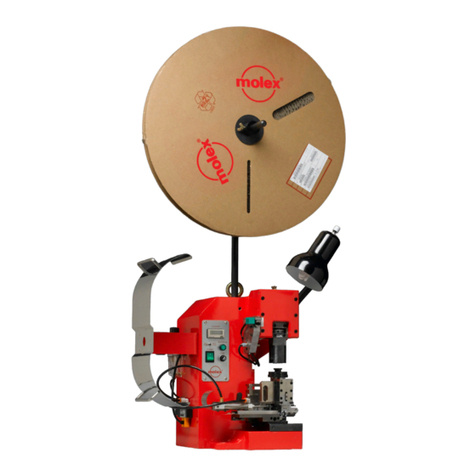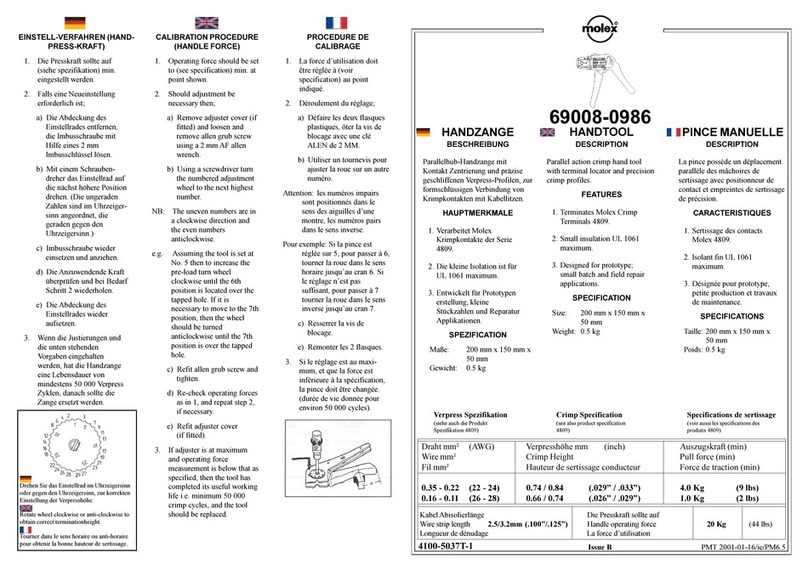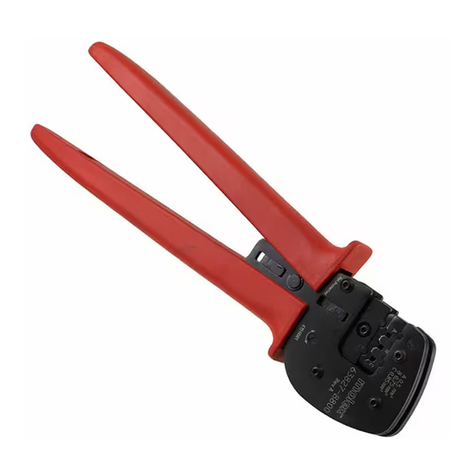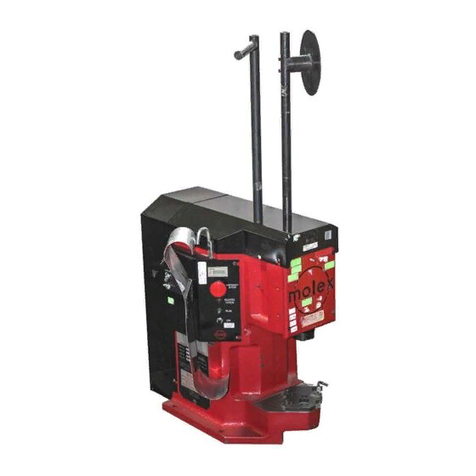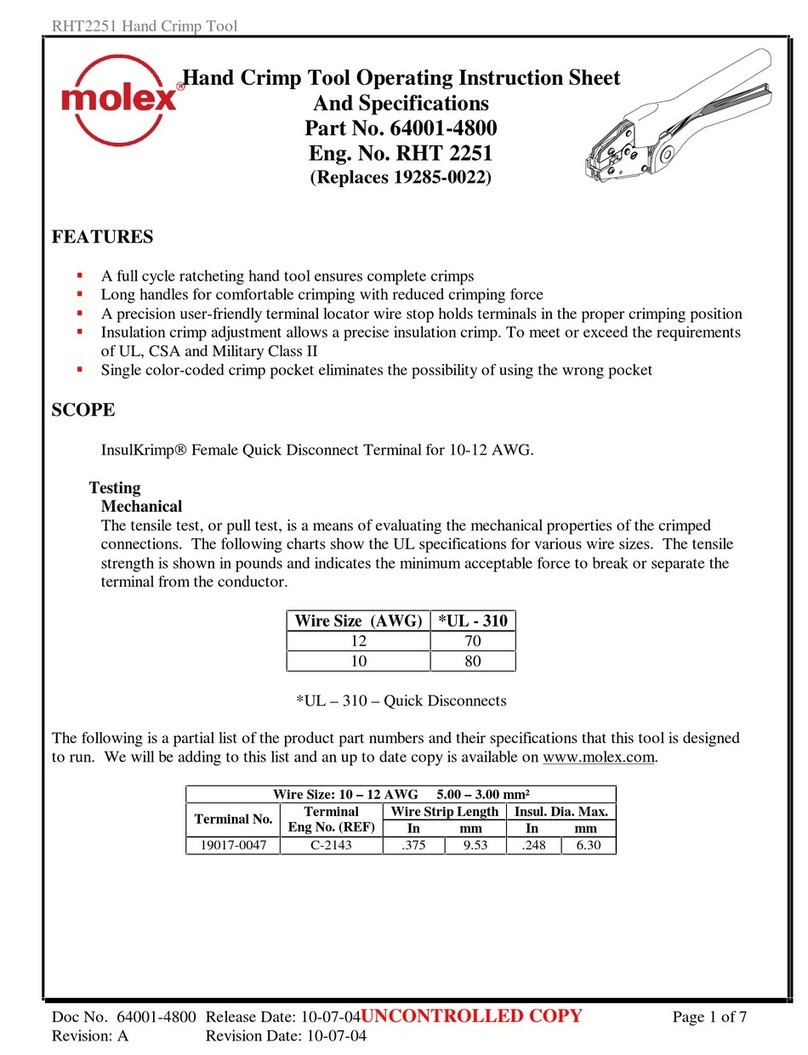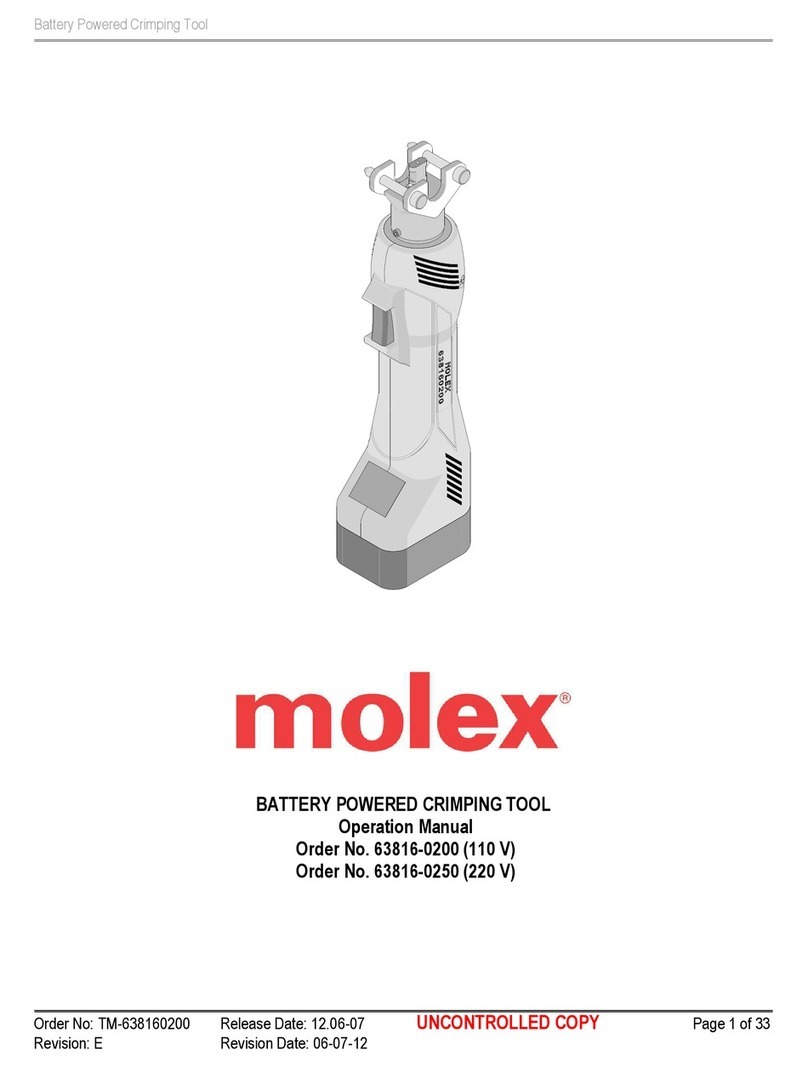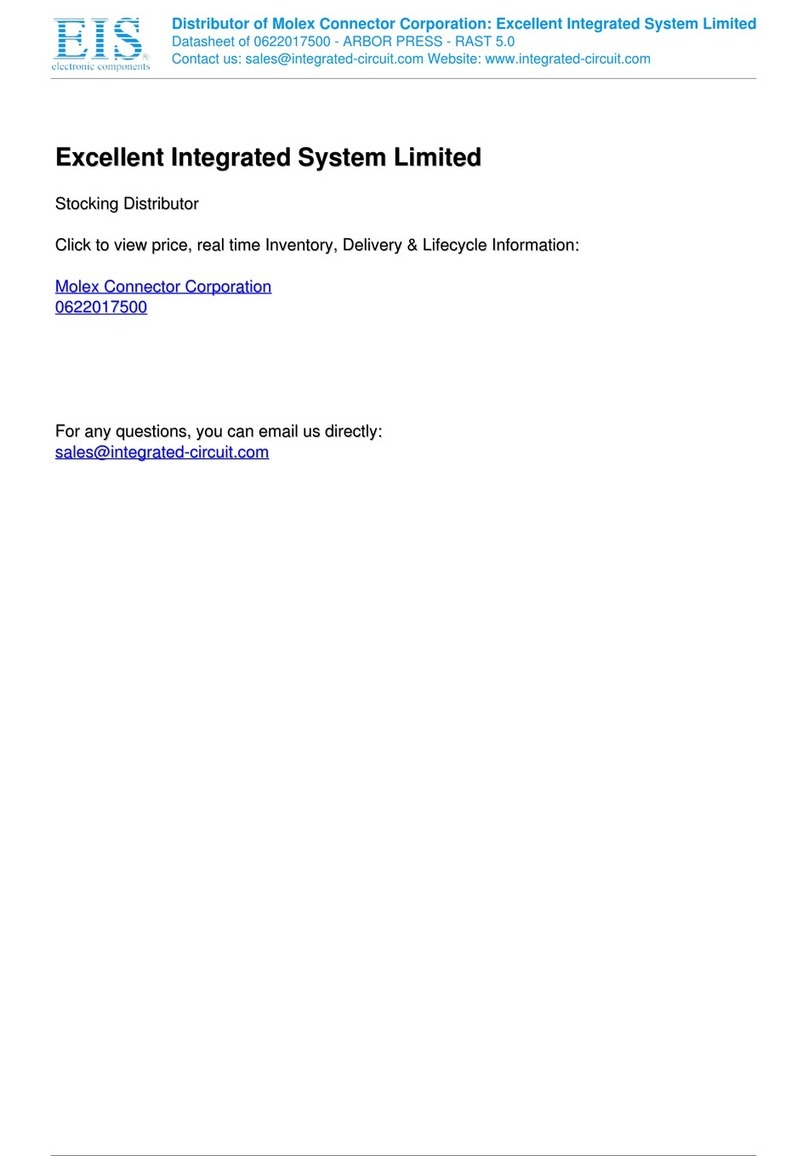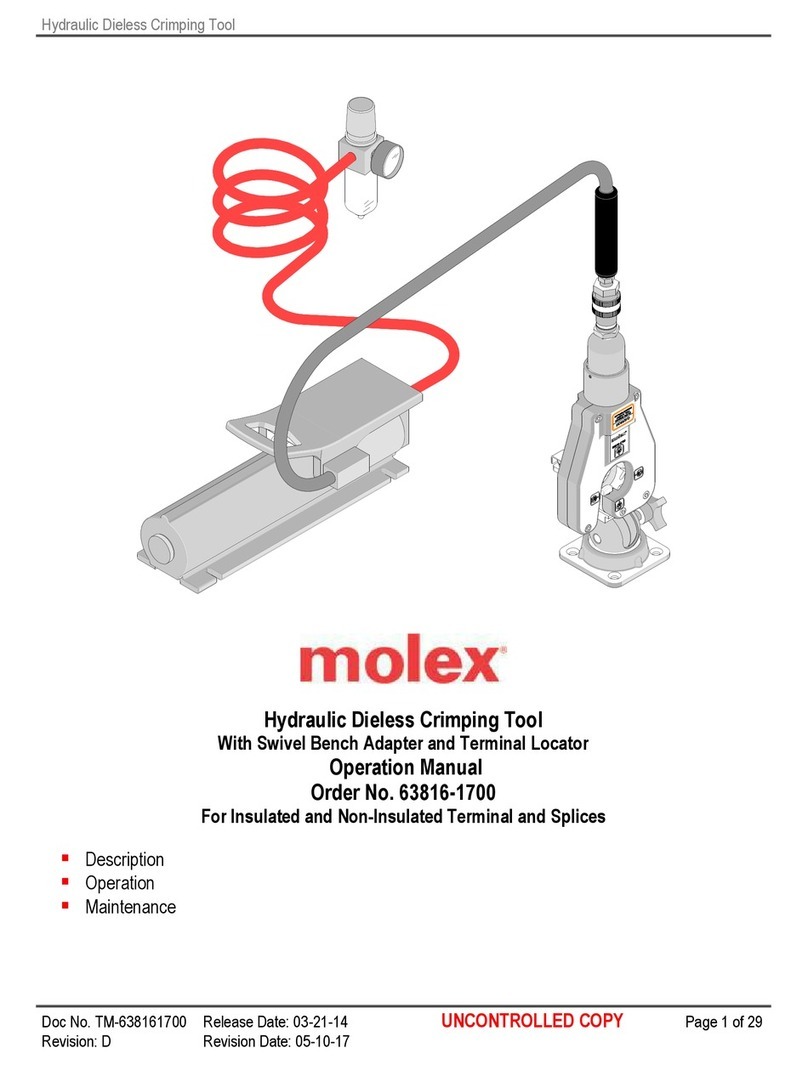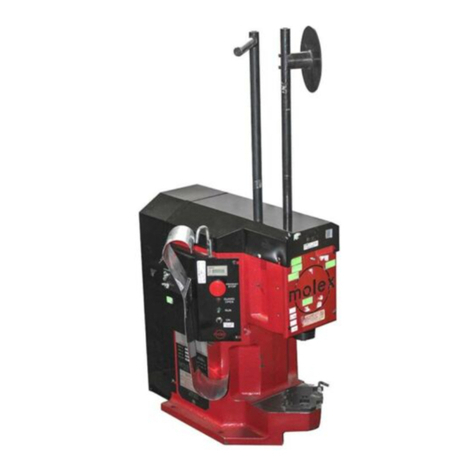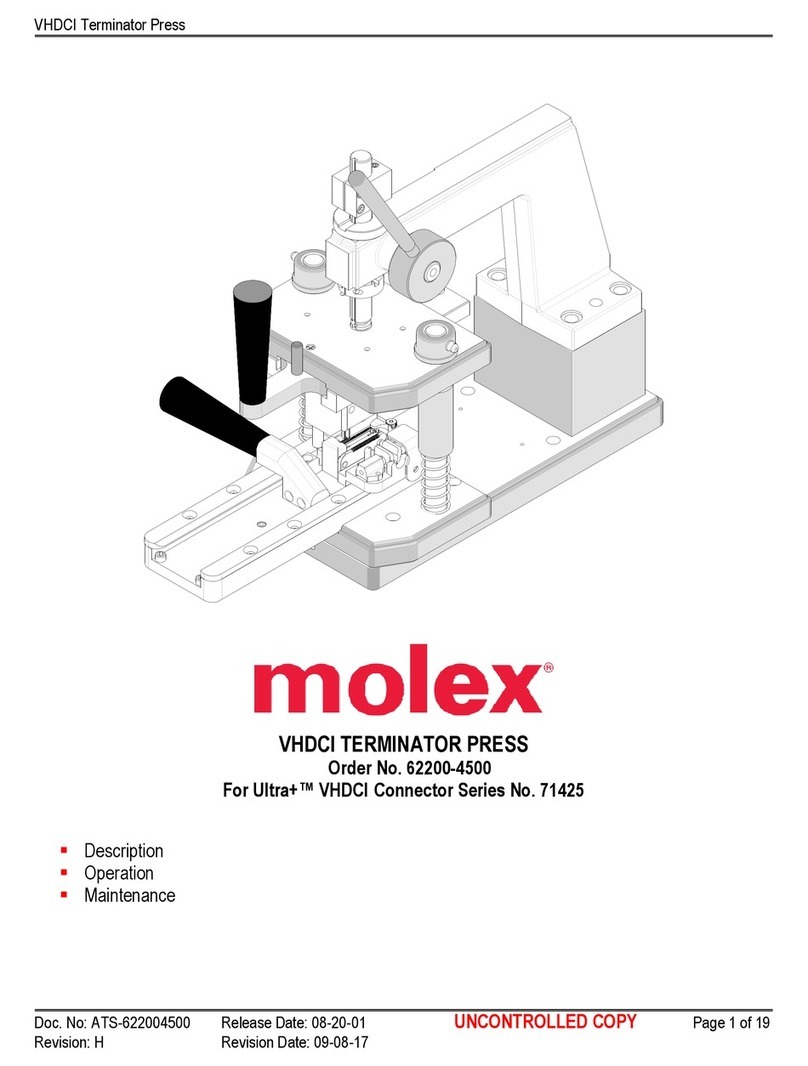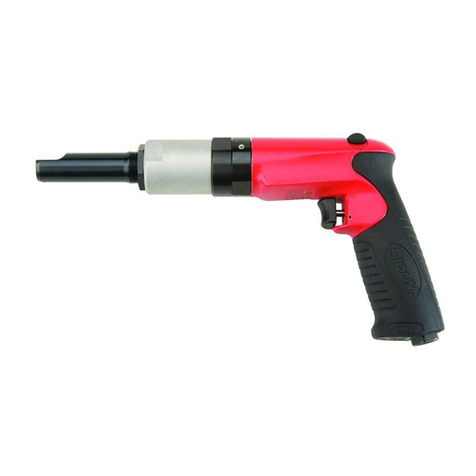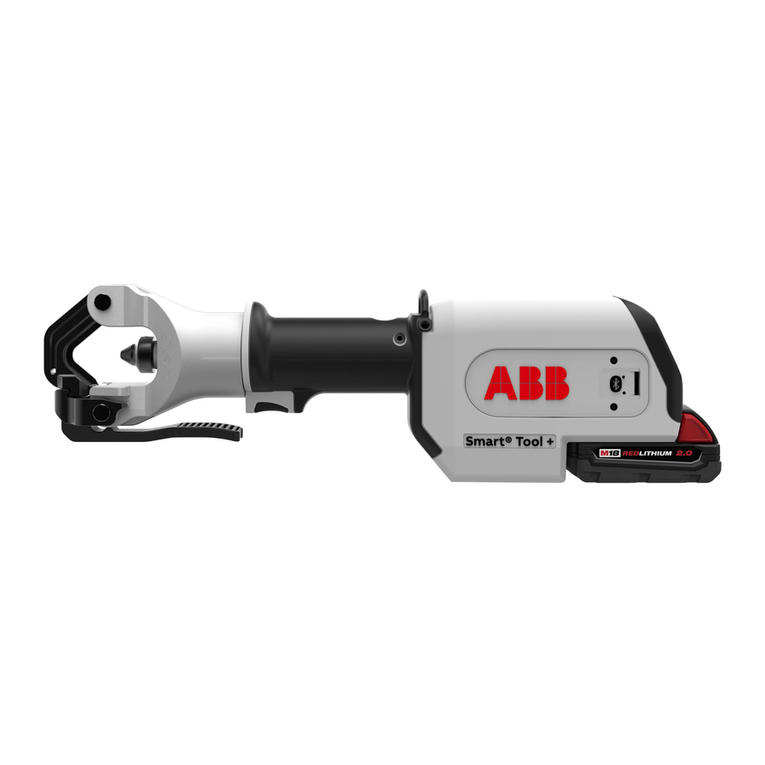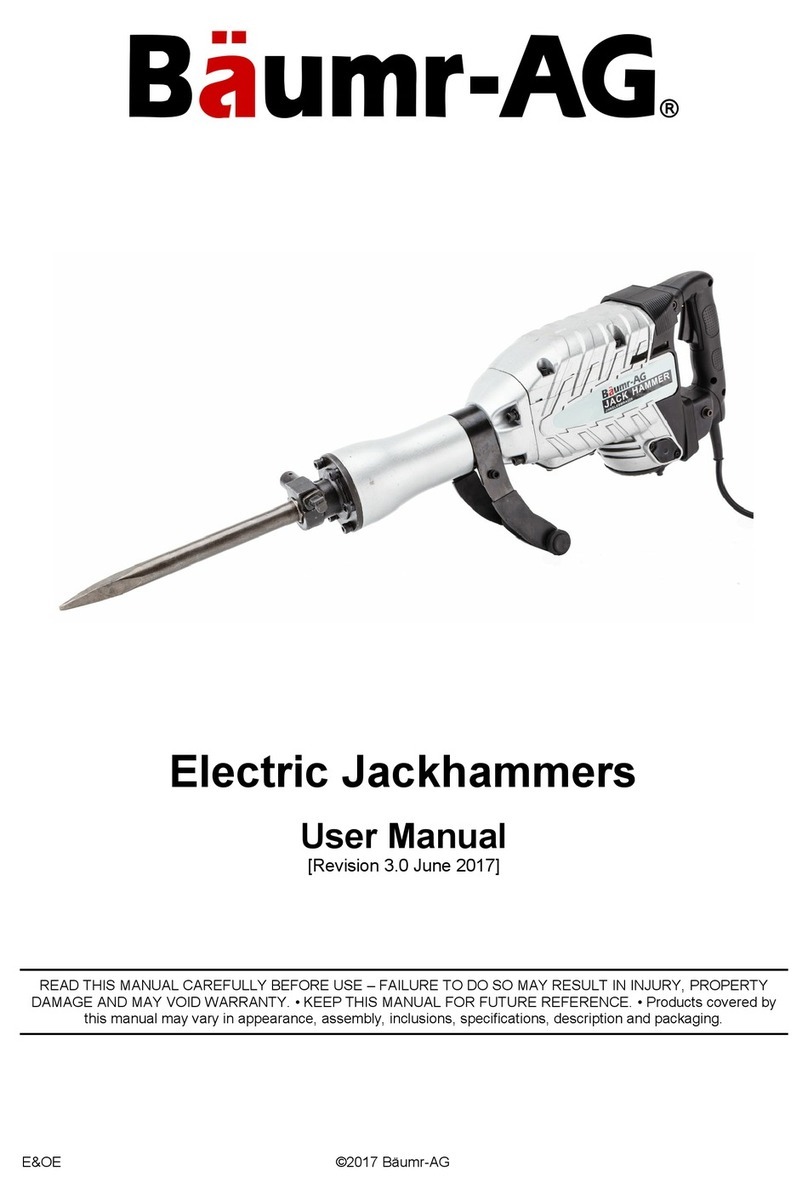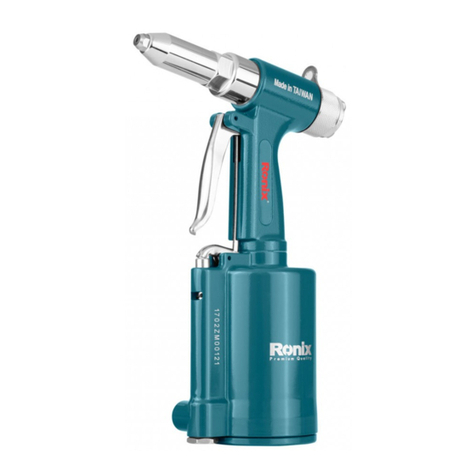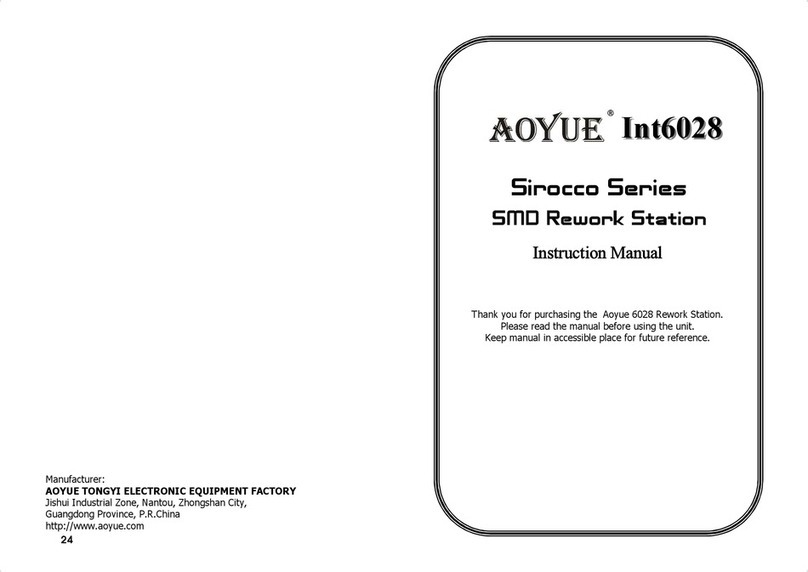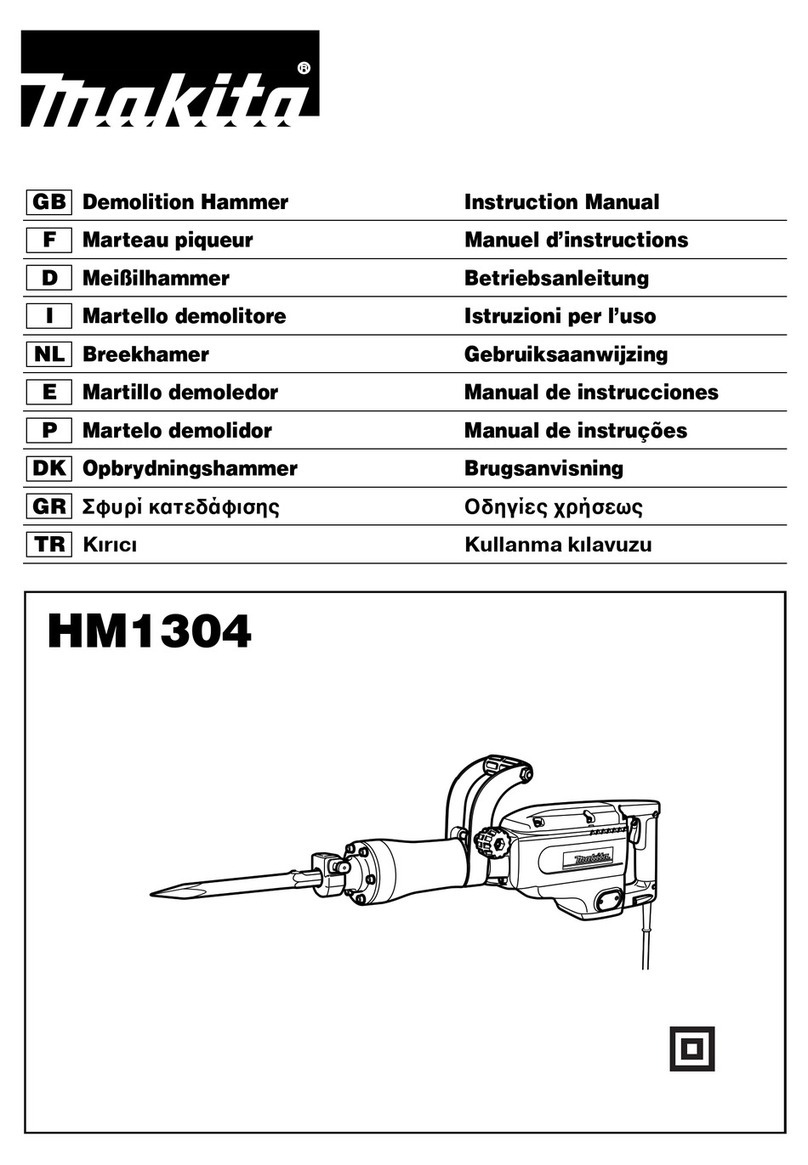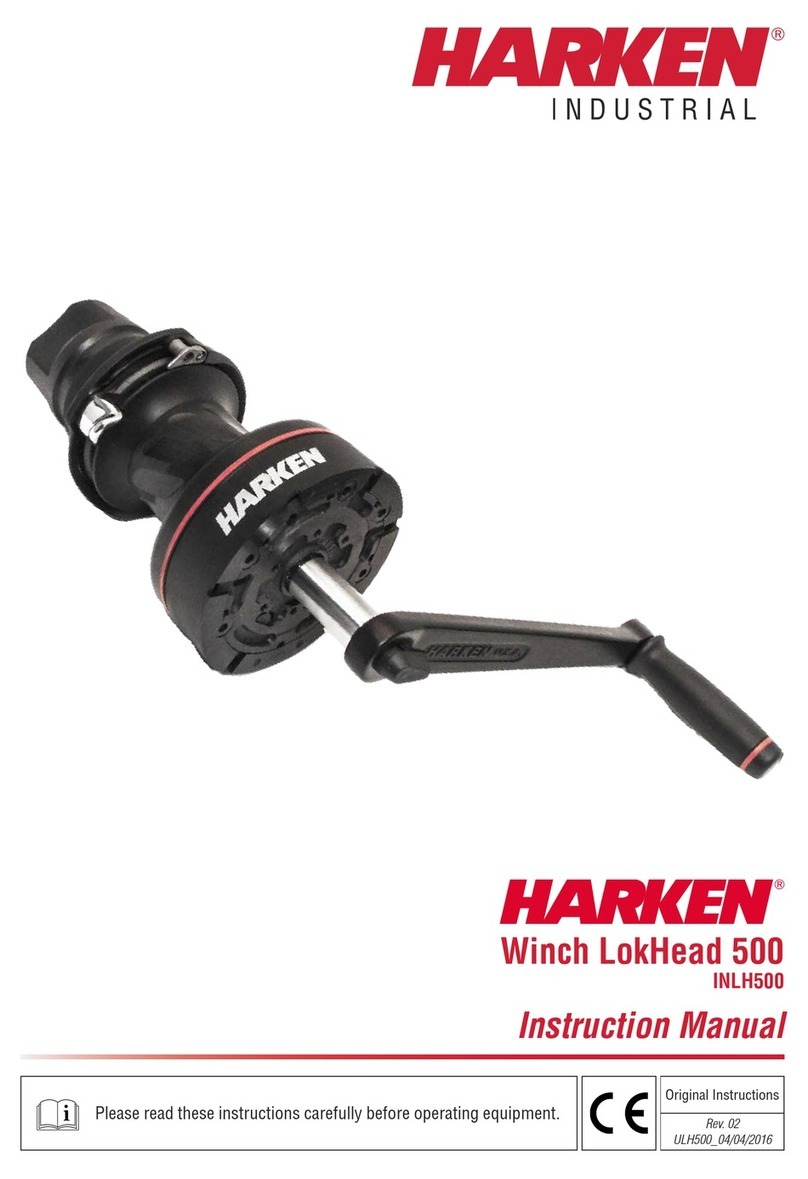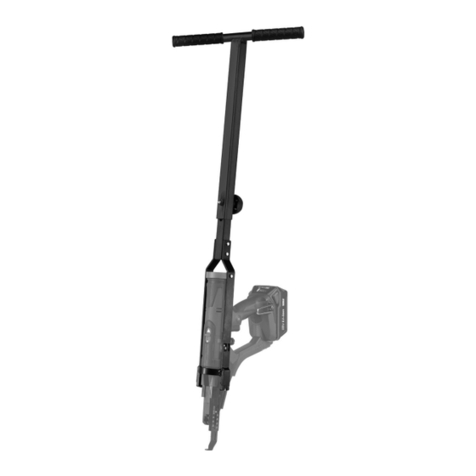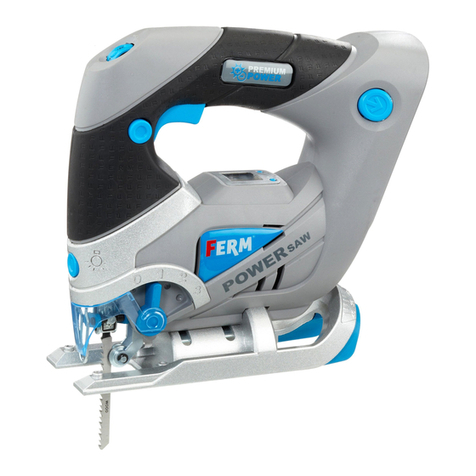
Hand Crimp Tool for.187 Slip on QD Receptacle Terminals
Doc No: ATS-638272000 Release Date: 07-09-15 UNCONTROLLED COPY Page 4 of 7
Revision: A Revision Date: 07-09-15
5. Replace the locator assembly into the frame head.
6. Reinstall the tightening lock nut.
Remove and Install Tooling
1. Make sure the tool is in open position before remove or install tooling.
2. The locator must be removed before remove or install tooling.
3. Remove the M3 screw which is holding the upper tooling.
4. Remove or install upper tooling through the back side of the tool frame.
5. Install the M3 screw. Make sure the small markings on the front of the hand tool frame match up. See
Figure 5.
6. Follow step 3 to 5 for the lower tooling except through the front
side of the tool frame and install the M3 screw. Be sure the
small markings on the lower tooling line up with upper tooling.
7. Slowly close the tool handles to align upper and lower tooling
together. Tighten the M3 screws and continue squeezing the
tool handles until the hand tool swings open.
8. Reinstall the locator by following the Instructions in the locator
replacement section.
Maintenance
It is recommended that each operator of the tool be made aware of,
and responsible for, the following maintenance steps: See Figure
6.
1. Un-snap the 2 Snap-On plastic covers front and back.
2. Remove dust, moisture, and other contaminants with a clean brush, or soft, lint free cloth.
3. Do not use any abrasive materials that could damage the
tool.
4. Make certain all pins; pivot points and bearing surfaces are
protected with a thin coat of high quality machine oil. Do not
oil excessively. The tool was engineered for durability but
like any other equipment it needs cleaning and lubrication
for a maximum service life of trouble free crimping. Light oil
(such as 30 weight automotive oil) used at the oil points,
every 1,000 crimps or 3 months, will significantly enhance
the tool life.
5. Wipe excess oil from hand tool, particularly from crimping
area. Oil transferred from the crimping area onto certain
terminations may affect the electrical characteristics of an
application.
6. When tool is not in use, keep the handles closed to prevent
objects from becoming lodged in the crimping dies, and
store the tool in a clean, dry area.
SMALL
FLAT HEAD
SCREWDRIVER
HANDLES SHOULD BE
PARTIALLY CLOSED
LUBRICATION
POINTS
(BOTH SIDES)
LIGHT OIL
(EVERY 3 MONTHS
OR 1,000 CRIMPS)

